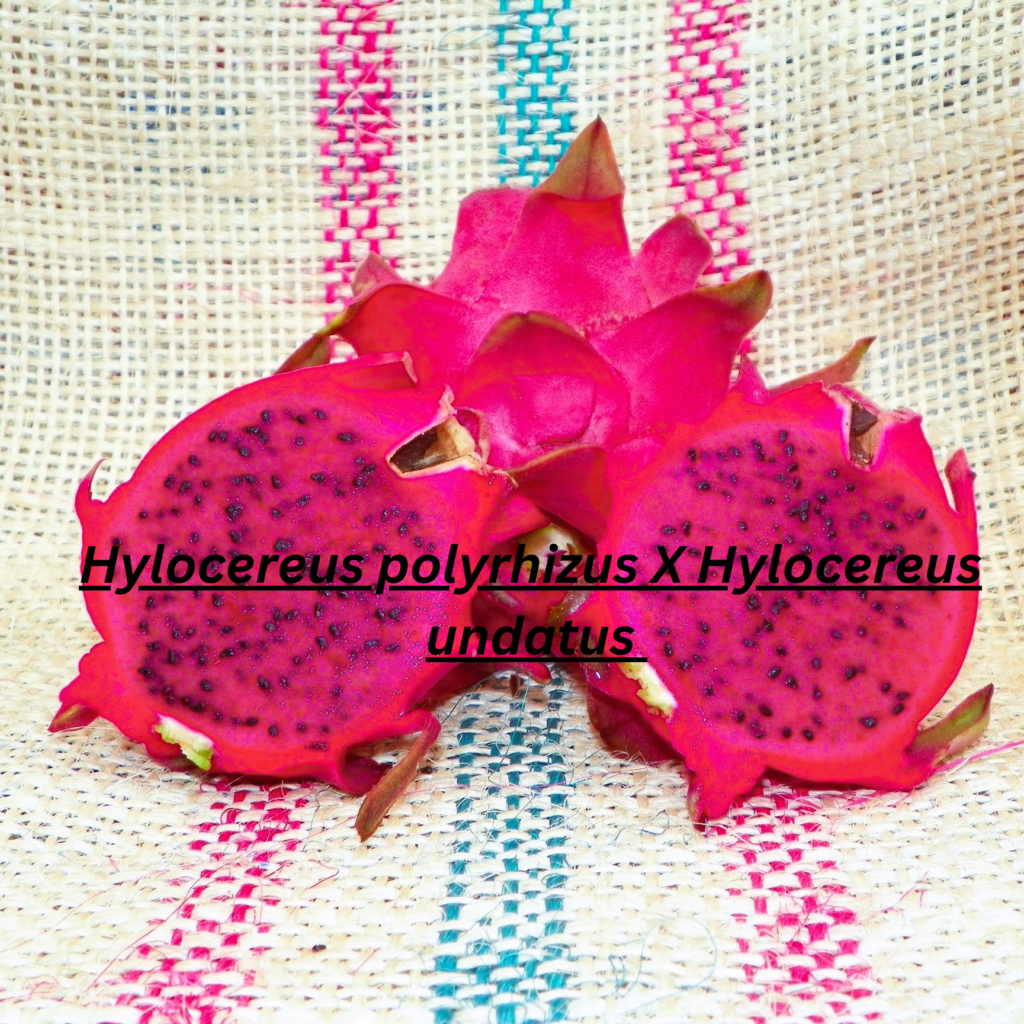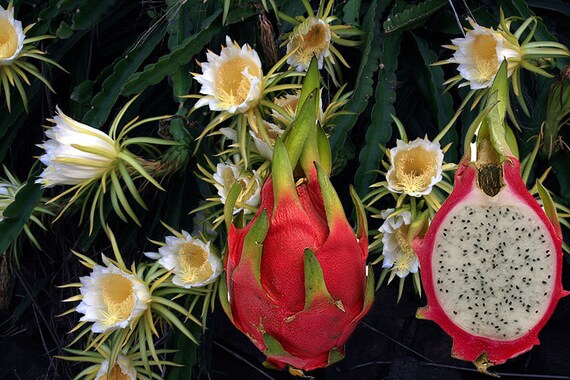Hylocereus ocamponis is a species of cactus that belongs to the Cactaceae family. Hylocereus polyrhizus X Hylocereus undatus likely refers to a hybrid between two different species of dragon fruit cacti. The Hylocereus genus includes various species commonly known as dragon fruit or pitaya.
Hylocereus ocamponis

Here are some general characteristics and care tips for Hylocereus ocamponis:
Appearance:
The plant typically has climbing or vining stems with flattened, segmented stems. The stems are often triangular and can have a vibrant green color.
Flowers:
Costa Rican Sunset cactus produces beautiful, nocturnal flowers. The flowers are usually large and have a pleasant fragrance. They typically bloom at night and may be white or have shades of pink.
Growing Conditions:
Light: Provide bright, indirect light. These cacti do well in partial sunlight or filtered sunlight.
Soil: Well-draining cactus or succulent mix is suitable.
Watering: Allow the soil to dry out between waterings—water sparingly, as overwatering can lead to root rot.
Temperature: Keep the plant in a warm environment. It is sensitive to cold temperatures and should be protected from frost.
Propagation:
Hylocereus ocamponis can be propagated through stem cuttings. Allow the cut end to dry and callous before planting it in soil.
Support:
As a climbing cactus, it may benefit from some support or a trellis as it grows.
Remember that specific care requirements may vary slightly based on the exact conditions and environment in which the plant is kept. Always monitor your plant and adjust care accordingly.

Hylocereus polyrhizus X Hylocereus undatus
Hylocereus polyrhizus X Hylocereus undatus likely refers to a hybrid between two different species of dragon fruit cacti. The Hylocereus genus includes various species commonly known as dragon fruit or pitaya. Hylocereus polyrhizus and Hylocereus undatus are two specific species that are often crossed to create hybrids with desirable characteristics.
Here are some general characteristics and care tips for dragon fruit hybrids:
Appearance:
The appearance of the hybrid may vary, but it typically combines features from both parent species. Dragon fruit hybrids often have elongated, triangular stems with prominent ribs, and they may come in various colors, including red, pink, and yellow.
Flowers:
Like other dragon fruit plants, hybrids produce large, showy, and night-blooming flowers. The flowers are usually white and may have a sweet fragrance.

Growing Conditions:
Light: Dragon fruit hybrids prefer full sun but can tolerate partial shade.
Soil: Well-draining cactus or succulent mix is suitable.
Watering: Allow the soil to dry out between waterings. Water more sparingly during the dormant winter months.
Temperature: Dragon fruit plants are tropical and prefer warm temperatures. Protect them from frost.
Fruit:
The hybrid’s fruit may vary in size, shape, and color. It typically has sweet, juicy flesh with tiny black seeds.
Propagation:
Dragon fruit hybrids can be propagated through stem cuttings. Allow the cuttings to dry and callous before planting them in well-draining soil.
Support:
As the plant grows, it may need support, especially if it develops heavy fruit. Providing a trellis or other support structure can help.
As with any plant, specific care requirements may vary based on the particular conditions in which it is grown. If you have a specific dragon fruit hybrid and want more detailed care instructions, it’s always a good idea to observe the plant’s behavior and adjust care accordingly.
see next post for more types,click here to jump on next post.
